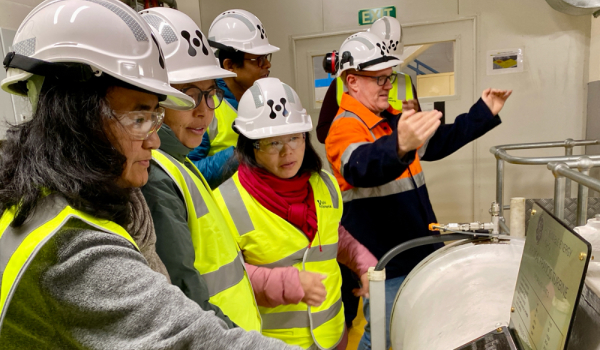
SARIC is one of the many initiatives of the Government of Australia through which its commitment to social inclusion is articulated in its national and international development engagements. Department of Foreign Affairs & Trade’s (DFAT) Gender Equality and Women’s Empowerment Strategy provides the policy structure for its commitments on gender equality, social inclusion and women’s empowerment to be designed and operationalized at national and international levels.

Gender equality and women’s empowerment is a priority within Australia’s Aid Policy presented in 2014. A revised Gender Equality and Women’s Empowerment Strategy of 2016 has three priorities to guide work on gender

SARIC builds on the existing commitments of all the partners to ensuring that gender, disability, and social inclusion considerations are incorporated into investment selection, design and implementation. To promote gender and socially inclusive quality investments, there should be a cadre of professionals in the region who have been exposed to good gender, disability and social inclusion practices in infrastructure planning and implementation. The training and networking component will include particular attention to ensuring that women and other underrepresented groups of professionals have equal opportunity to participate, and that all participants are sensitized to the constraints facing women and socially excluded groups in transport and energy projects.

The Australian Government is working closely with regional partners by stepping up renewable energy investment and climate and disaster resilience support through their development program. The Climate Change Action Strategy (2020-25) launched on 1 November 2019, underpins climate investments, and assists the Department of Foreign Affairs and Trade (DFAT) to meet Australia’s climate finance commitments.
The Climate change is a major risk to sustainable development and is threatening global efforts to eradicate poverty. Addressing the risks of climate change, as well as taking advantage of the opportunities from climate action – such as more climate-resilient economic growth, jobs and technologies – reinforces sustainable development and supports poverty reduction.

Climate change mitigation and adaptation are already strongly integrated into infrastructure planning in the region, particularly given South Asia’s experience with flooding, cyclones and other disasters. The emphasis is most clearly seen in the push to expand renewable energy sources, but it also forms an important part of planning transport infrastructure. Where possible, the delivery partners will reinforce existing national practice and international experience for climate change mitigation and adaptation — including the stock of knowledge developed under the Infrastructure for Growth—to inform the design of pipeline projects.
Global best practices and experiences in planning for infrastructure for climate change resilience is a significant element underpinning the conduct of scoping and diagnostic activities for proposed projects. Practices and experiences in managing infrastructure for climate change resilience will also be an important element of SARIC’s training and networking component.